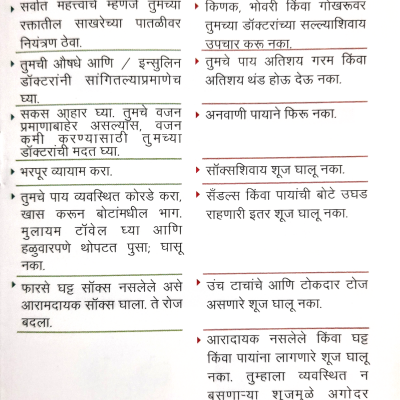Diabetic Peripheral Neuropathy (DPN)
Diabetic peripheral neuropathy (DPN) is more likely to be caused by diabetes-damaged nerves. People with diabetes generally have elevated blood sugar levels, and over time these elevated levels can permanently damage the nerves in the legs and arms. Diabetic peripheral neuropathy (DPN) has a lifetime prevalence of about 50% and so one must visit the best neurosurgeon in Pune. It is one of the most common complications of diabetes.
Symptoms
The type of symptoms and the severity of the pain vary from person to person. Following are the most common symptoms
- intense pain
- Poking sensation
- Throbbing Pain
- Burning
- Cramps
- Feeling pierced
- Numbing sensation
Does
- The most important thing is to control your blood sugar level.
- Take your medicines and insulin injections as prescribed by your doctor.
- Eat a healthy diet. If you are overweight, seek the help of your doctor to lose weight.
- Exercise a lot.
- Dry your feet properly—especially the parts between the fingers. Take a soft towel and wipe gently, do not rub.
- Wear comfortable socks that are not too tight, and make sure you change them every day.
Don’t
- Without consulting your doctor
- Do not let your feet get too hot or cold.
- Do not walk barefoot.
- Do not wear shoes without socks.
- Do not wear sandals or other shoes that expose the toes.
- Do not wear shoes with high heels and pointed toes.
- Do not wear shoes that are not comfortable or tight for the feet. If you are already having problems with shoes that do not fit properly, you should use shoes that are tailored to your feet.
Workout
Exercise is very important for overall health and wellness. Along with a planned diet, medication as needed, and stress management, regular exercise is important in treating diabetes.
Exercise Information for DPN
1. Aerobic Exercise
Aerobic exercise involves the movement of large muscles and breathing deeply. This increases blood circulation and releases endorphins.
The best practice in aerobic exercise involves exercising for about 30 minutes daily and at least three days a week. If you are starting out, try to exercise for 10 minutes every day, which will minimize your body pain.
Types of aerobic exercise
- Walking around
- Cycling
Stretching Exercises
Stretching increases your flexibility and keeps your body warm for other physical exercises. Stretching improves blood circulation by increasing blood flow to your muscles and thus, improving the active life in diabetic peripheral neuropathic patients.
Types of Stretching Exercises
- Sit and stretch the hamstrings.
- Sit on the edge of the chair. Stretch your one foot in front of you with the toes pointing upwards.
- Bend the other knee keeping the sole of the foot flat on the ground.
- Bend your chest towards your straight legs, and keep your back stiff until the muscles feel tense. Hold this position for 15-20 seconds.
Calf Exercise:
- Balance yourself using a chair or counter.
- Lift the heel of both feet off the ground so that you stand on your toes. Then slowly come down on your feet.







